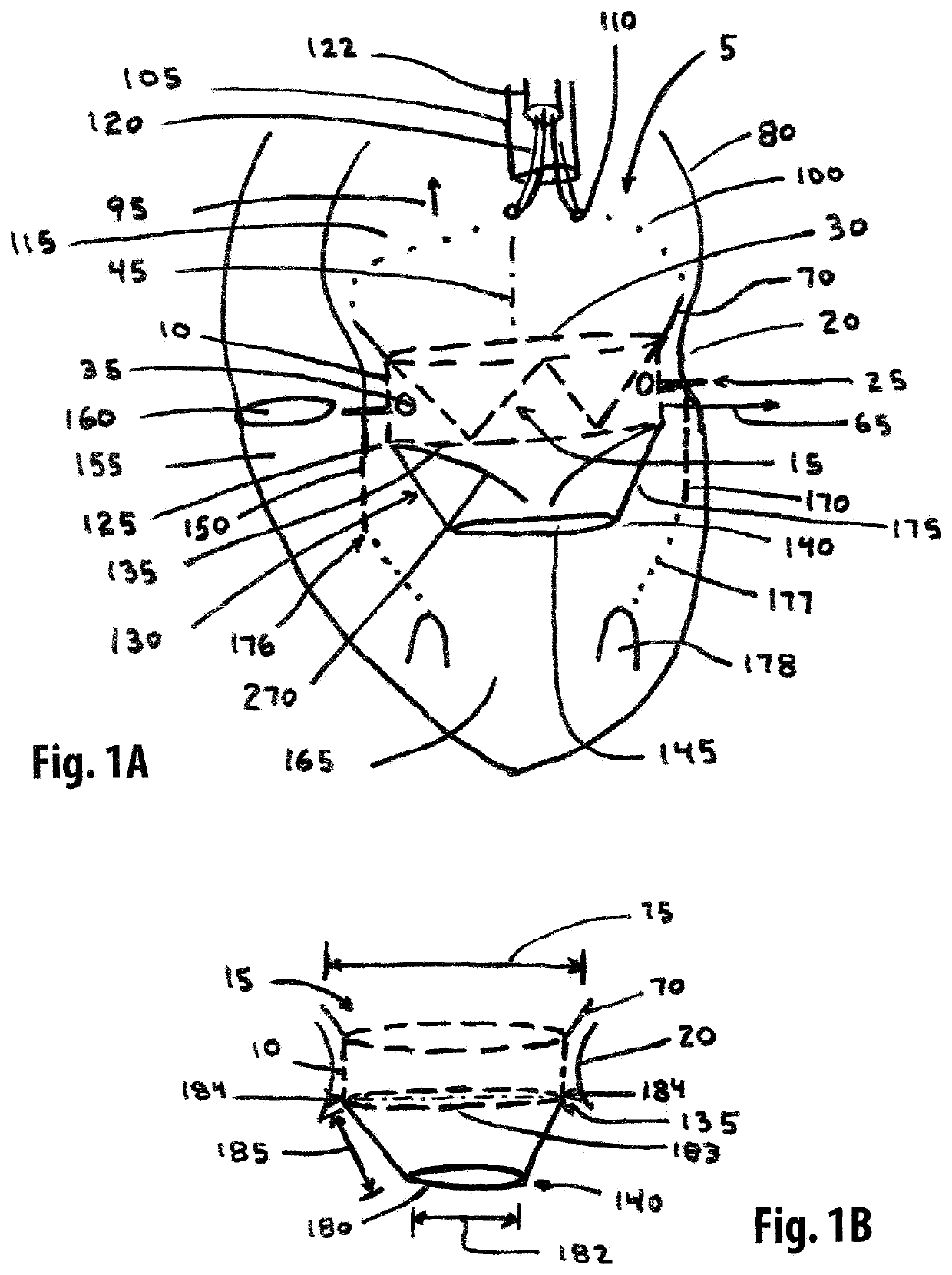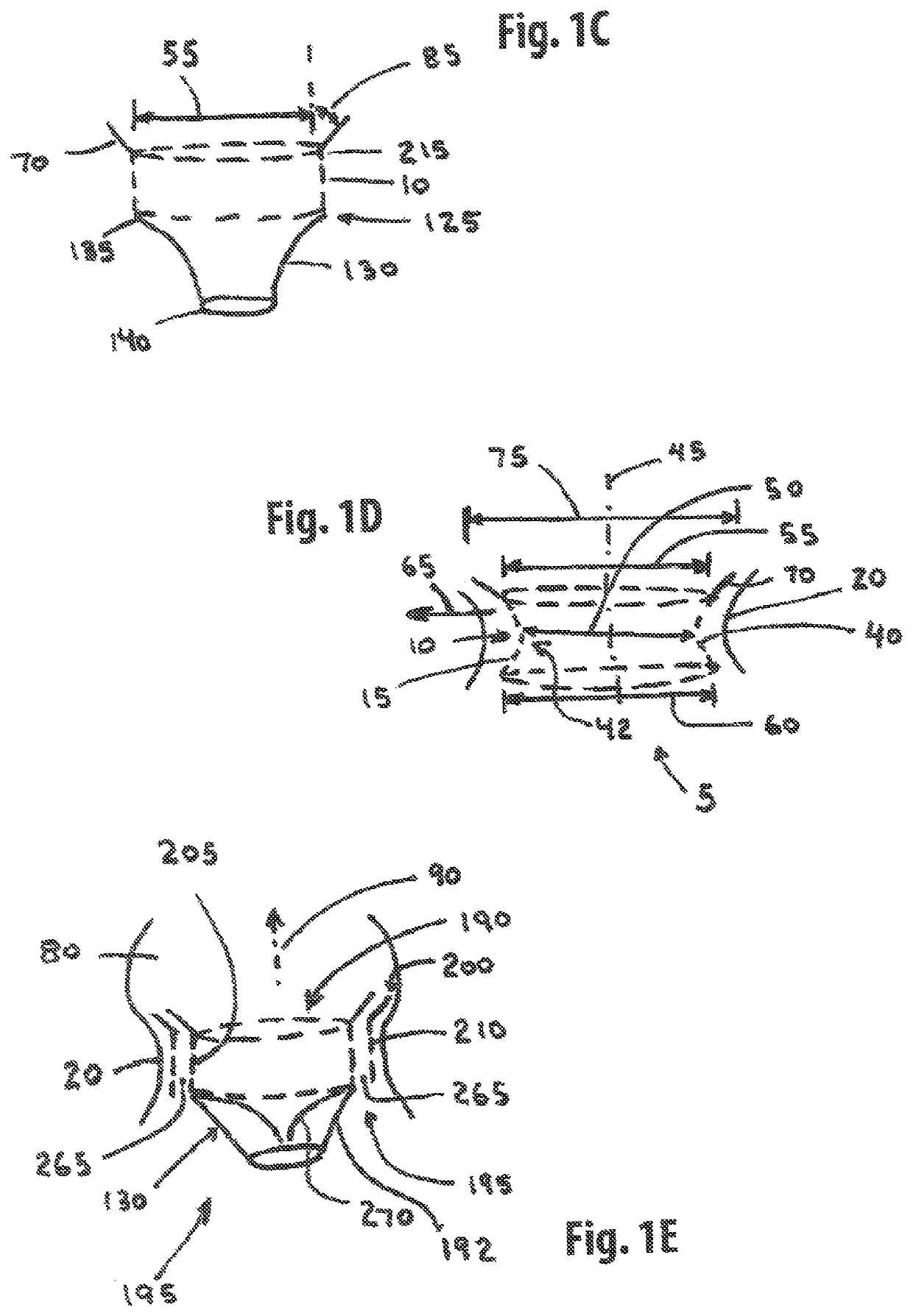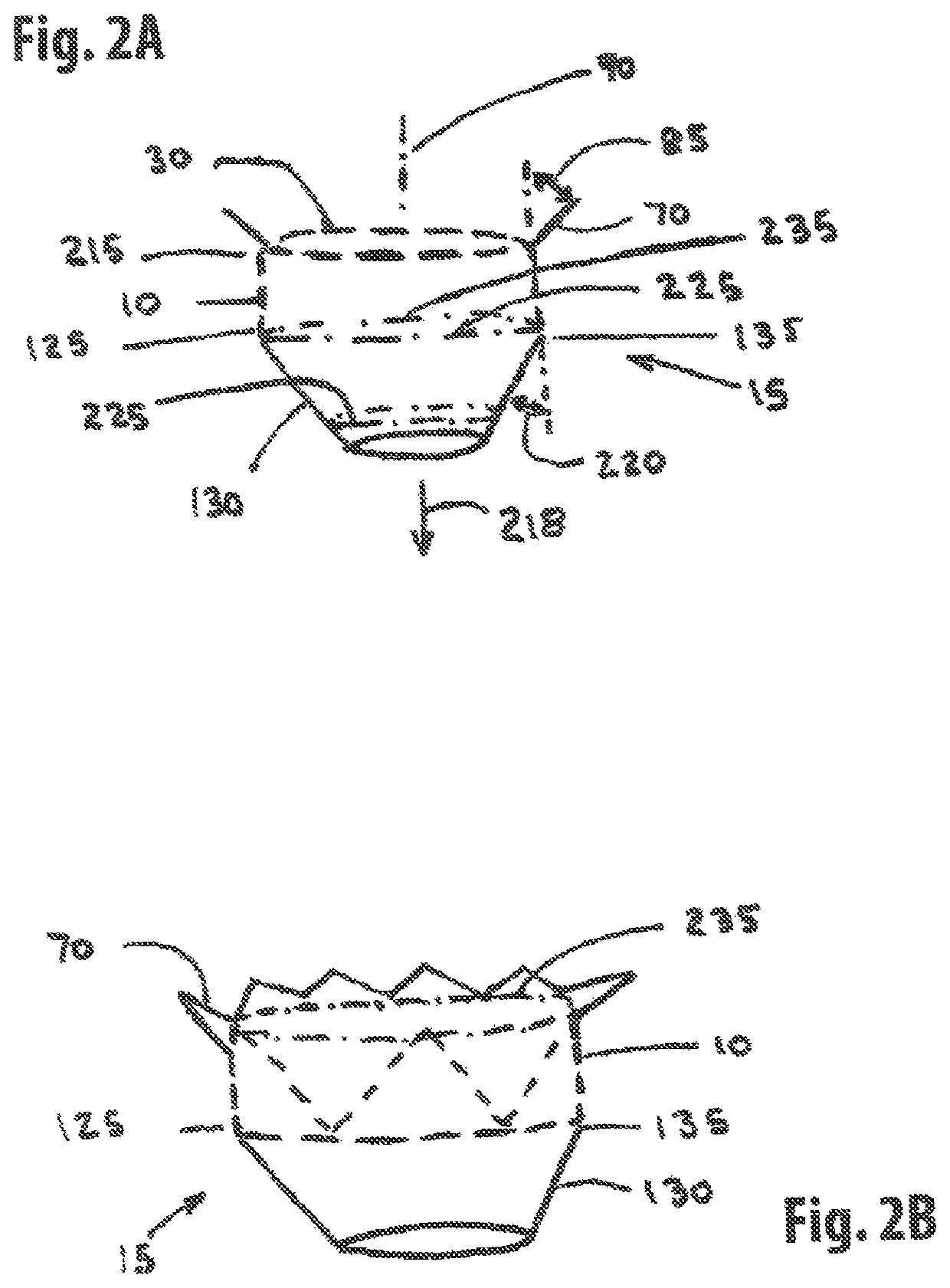Annuloplasty device and methods
a technology of annuloplasty and a valve leaflet, which is applied in the field of annuloplasty device and methods, can solve the problems of abnormal tension and angulation of the mitral valve leaflet, the less invasive surgical procedure is not as well developed for replacing abnormally functioning mitral valves, and the flow of regurgitants that can require repair or replacement of the valve, etc., and achieves high strength.
- Summary
- Abstract
- Description
- Claims
- Application Information
AI Technical Summary
Benefits of technology
Problems solved by technology
Method used
Image
Examples
Embodiment Construction
[0221]One embodiment of the present invention comprises a single member stent-valve that is intended as a transcatheter replacement valve for a valve of the heart; the single member stent-valve (5) is intended to be delivered within the lumen of the native heart valve and expanded outwards forming a functioning valve device having replacement leaflets. The valve device will be described in an application for its use as a transcatheter mitral valve replacement (TMVR) although it is understood that the invention can be applied to other valves found within the heart. The invention further comprises a dual member stent valve comprised of two components, a first component or support member and a second component or valve member. The first component is delivered across the annulus of the heart and affixed to the annulus or other native tissues of the heart; the first component does not interfere with function of native valve leaflets such that the mitral valve is fully functional while aw...
PUM
 Login to View More
Login to View More Abstract
Description
Claims
Application Information
 Login to View More
Login to View More - R&D
- Intellectual Property
- Life Sciences
- Materials
- Tech Scout
- Unparalleled Data Quality
- Higher Quality Content
- 60% Fewer Hallucinations
Browse by: Latest US Patents, China's latest patents, Technical Efficacy Thesaurus, Application Domain, Technology Topic, Popular Technical Reports.
© 2025 PatSnap. All rights reserved.Legal|Privacy policy|Modern Slavery Act Transparency Statement|Sitemap|About US| Contact US: help@patsnap.com



